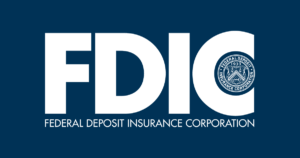Notice and Summary: FDIC’s Releases a Comprehensive Overview of the Deposit Insurance System
 On May 1st, the FDIC released a report titled “Comprehensive Overview of Deposit Insurance System, Including Options for Deposit Insurance Reform” along with a statement from FDIC Chairman Martin J. Gruenberg. The Report, the related press release and Chair Gruenberg’s statement can be found at the links provided.
On May 1st, the FDIC released a report titled “Comprehensive Overview of Deposit Insurance System, Including Options for Deposit Insurance Reform” along with a statement from FDIC Chairman Martin J. Gruenberg. The Report, the related press release and Chair Gruenberg’s statement can be found at the links provided.
The report provides a history of bank deposit insurance in the United States, outlines objectives of and possible consequences of bank related deposit insurance, tools utilized to support those objectives and address possible consequences of the three main options to consider for future deposit insurance including limited coverage, unlimited coverage and targeted coverage. Finally, the report discusses the implication of excess deposit insurance coverage and some additional options that may be meaningful.
In reviewing the three options of deposit insurance coverage, the FDIC considered the following:
- Limited Coverage or maintaining the current system of deposit insurance with the possibility of increasing the deposit insurance limit.
- Unlimited coverage or fully insuring all deposits, or
- Targeted Coverage or providing substantial additional coverage to business payment accounts without extending the same insurance to all deposits.
The report generally found that the limited coverage option does not adequately address the run risk associated with high concentrations of uninsured deposits, a trend that increased significantly since the inception of deposit insurance. Further, the review indicates that unlimited coverage would effectively remove run risk, however, its impact on bank risk-taking and earnings due to substantial assessment increases would be detrimental to the broader financial market.
While no specific insurance threshold was provided in the report, the FDIC suggests that the targeted coverage option would provide substantial additional coverage to business payment system accounts without extending similar insurance to all deposits and would provide the most effective financial stability relative to its costs. This option would present challenges related to defining the types of non-investment accounts deposit insurance should apply and could potentially decrease transparency to consumers due to increased complexity. To be effective, complimentary tools necessary to ensure effectiveness of this option would need to be implemented including:
- Considering interest rate restrictions on accounts for which additional coverage is extended;
- Consider simplification of ownership categories to decrease complexity;
- If large accounts remain partially insured require that large deposits are secured; and
- If large accounts remain partially insured, place limits on convertibility for large deposits.
The FDIC also briefly discussed excess deposit insurance coverage that could address different aspects of the current deposit insurance system and warranted consideration. While considering this parallel option, the FDIC determined that its voluntary nature was unlikely to have notable broader market effects as those institutions most needing coverage would likely be the most likely to opt out of such coverage.
NASCUS staff are currently reviewing the report and will provide updates on the issue as its progresses.